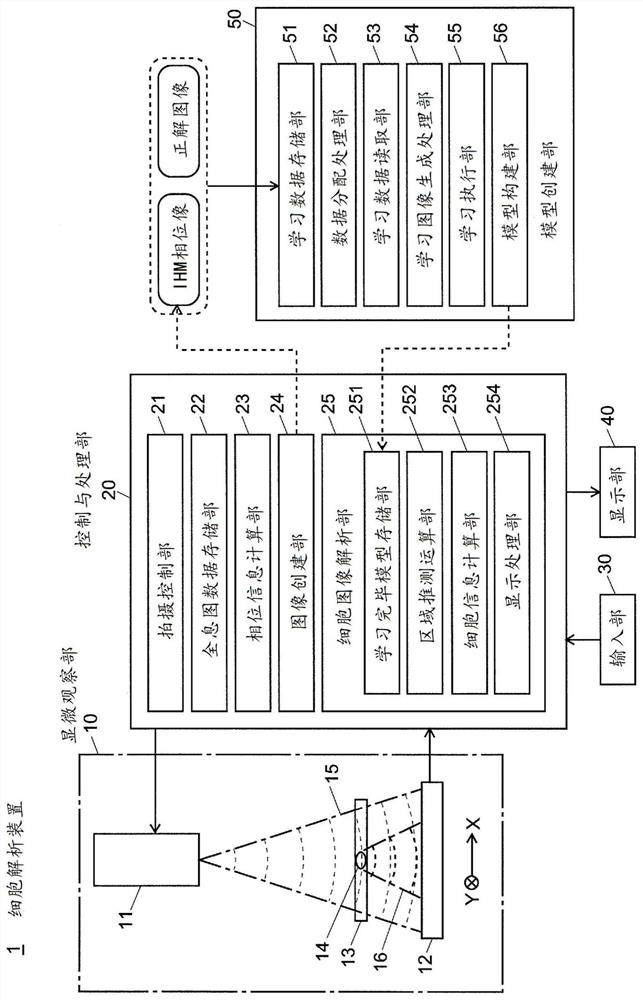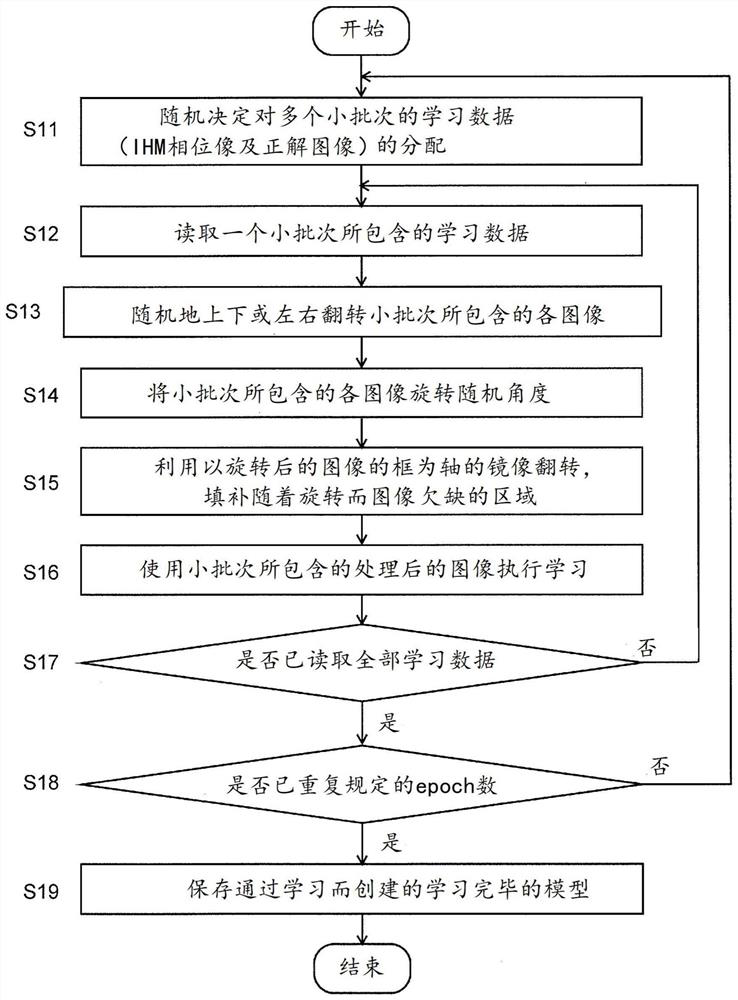Cellular image analysis method, cellular image analysis device, and learning model creation method
An image analysis and learning model technology, applied in the field of analysis and processing, can solve the problems of missing bad areas or foreign objects, poor efficiency of cell evaluation, and low judgment accuracy
- Summary
- Abstract
- Description
- Claims
- Application Information
AI Technical Summary
Problems solved by technology
Method used
Image
Examples
Embodiment Construction
[0063] Hereinafter, an embodiment of the cell image analysis method and the cell image analysis apparatus of the present invention will be described with reference to the drawings.
[0064] figure 1 It is a schematic configuration diagram of a cell analysis apparatus using a cell image analysis apparatus for implementing the cell image analysis method of the present invention.
[0065] The cell analysis device 1 of this embodiment includes a microscopic observation unit 10, a control and processing unit 20, an input unit 30 and a display unit 40 as a user interface, and a model creation unit 50.
[0066] The microscopic observation unit 10 is an in-line holographic microscopy (IHM), and includes a light source unit 11 including a laser diode, etc., and an image sensor 12, and cells are arranged between the light source unit 11 and the image sensor 12 The culture dish 13 of the colony (or cell monomer) 14.
[0067] The control and processing unit 20 controls the actions of the microsco...
PUM
 Login to View More
Login to View More Abstract
Description
Claims
Application Information
 Login to View More
Login to View More - R&D
- Intellectual Property
- Life Sciences
- Materials
- Tech Scout
- Unparalleled Data Quality
- Higher Quality Content
- 60% Fewer Hallucinations
Browse by: Latest US Patents, China's latest patents, Technical Efficacy Thesaurus, Application Domain, Technology Topic, Popular Technical Reports.
© 2025 PatSnap. All rights reserved.Legal|Privacy policy|Modern Slavery Act Transparency Statement|Sitemap|About US| Contact US: help@patsnap.com



